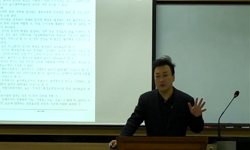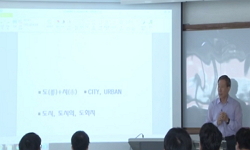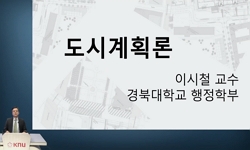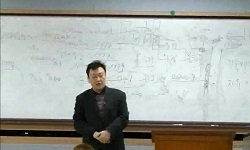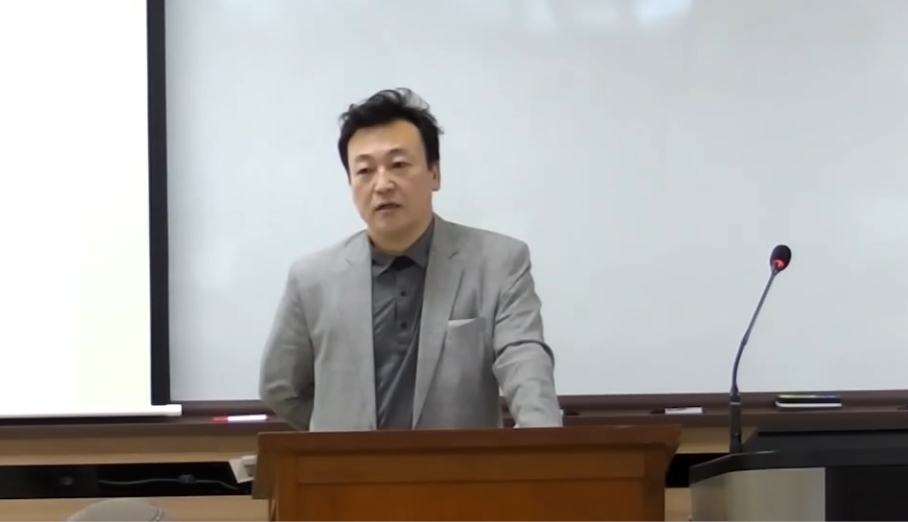This study examines how the Confucian urban space in the city wall coped with and got accustomed to the new order of modern city through the acculturation of Gungmyo(宮廟) and Gungsil(宮室), which is the important elements composing the urbal area...
http://chineseinput.net/에서 pinyin(병음)방식으로 중국어를 변환할 수 있습니다.
변환된 중국어를 복사하여 사용하시면 됩니다.
- 中文 을 입력하시려면 zhongwen을 입력하시고 space를누르시면됩니다.
- 北京 을 입력하시려면 beijing을 입력하시고 space를 누르시면 됩니다.
근대기 한양도성 안 宮廟와 宮室의 변용 = The Transformation of 'Gungmyo' and 'Gungsil' in the Hanyang city wall from 1863 to 1936
한글로보기https://www.riss.kr/link?id=T12878756
- 저자
-
발행사항
서울 : 서울시립대학교 일반대학원, 2012
-
학위논문사항
학위논문(박사) -- 서울시립대학교 일반대학원 , 건축학과 , 2012. 8
-
발행연도
2012
-
작성언어
한국어
- 주제어
-
KDC
610 판사항(4)
-
발행국(도시)
서울
-
형태사항
x, 256 p. : 삽화 ; 26cm.
-
일반주기명
지도교수:송인호
참고문헌 : p. 243-251 - 소장기관
-
0
상세조회 -
0
다운로드
부가정보
다국어 초록 (Multilingual Abstract)
This study examines how the Confucian urban space in the city wall coped with and got accustomed to the new order of modern city through the acculturation of Gungmyo(宮廟) and Gungsil(宮室), which is the important elements composing the urbal area of Hanseongbu(漢城府; the old name of Seoul), in the Joseon Dynasty.
With Jongmyo(宗廟) and Sajik(社稷), Gungmyo and Gungsil were national facilities established for the governance based on propriety, in the urban area of Hanseongbu, which was founded around the royal palace where the king resided. Both facilities were based on the ancestral rites in the royal family, but later Gungmyo was directly led by king to strengthen the meaning of it, by reproducing the authority of royal family and its ancestors, which strengthened the stability of state system and the royal authority. By contrast, Gungsil was used for Naetang(內帑; private property of the king) or places for various rituals, which was the royal family's economic basis. The establishment of Gungmyo and Gungsil was by itself based on the existence of king, and the relationship with the royal palace, which means that each of them was affected by the change of the urban space in Hanseongbu.
However, after king Gojong came to throne, the urban space of Hanseongbu changed dramatically. Since the reconstruction of Gyeongbokgung(景福宮) was complete, the center of the city was moved from Changdeokgung(昌德宮), which had been the central establishment since Japanese Invasion of Korea in 1592, to Gyeongbokgung. Since the proclamation of founding Korean Empire in 1897, the emperor's city was set around Gyeongoongung(慶運宮), and a new urban space was founded with Gyeongoongung and Wongudan(圓丘壇) as the center. The change was not limited to the understanding of the space, but extended to the will to autonomous modernization by changing the framework in the physical space of hanseongbu, such as the establishment of new palace, national monuments and new roads. The Korean Emperor was, as in the past, the main character who affected the relocation of the urban space, and such relocation and management was done with the palace as the center. However, the establishment of the Residency General(統監府; Japanese government for supervision) in 1905 and the abdication of Emperor Gojong in 1907, turning the empire into the age of Emperor Soonjong(純宗), which was the name-only empire, the autonomous efforts of urbanization could not be continued. Instead, the structure was transformed into the binary shape of the palace as the center of Korean Empire and the Residency General with Japanese residences as the center of the colonial authority, which signified the destruction of the traditional urban order. Also, the urban planning and road construction developed after the Japanese annexation of Korea(韓日倂合) created a new urban space with the buildings for colonial such as Japanese Government General and Keijo City Government(京城府廳) as the center. The colonial government's urban planning, represented by Project for Reconstructing Divisions of Kejjo(京城市區改修事業), had been focused on connecting the existing traditional space to the urban space by construction of roads, but for the long haul, it deconstructed the continuity of traditional urban space based on how the palace was used, and founded a new order system of colonial city Keijo(京城).
On the basis of the change of urban space in Hanseongbu, the chronological change from 1863 to 1936 is as follows. Gungmyo and Gungsil, which were reconstructed and moved in the Gyongbok Palace reconstruction project, showed the moving of center of the city following the change of how to use the palace. While the relationship between the palace and Gungmyo/Gungsil was still effective, the reformation of national governance system as strengthening the power of the Emperor was an attempt to seek for the modern use of Gungmyo and Gungsil with their changes. By contrast, the change of Gungmyo and Gungsil in the age of Soonjong reflected the historical circumstance of the establishment of the Residency General. Weaking power of the Emperor and increasing interference of the colonial power made Gungmyo and Gungsil fail to be closely related to the palace, and subjected to the national property. However, the change of Gungmyo and Gungsil was still affected by the Korean Empire. Finally, during the Japanese colonial era, the site where once Gungmyo and Gungsil had been changed as the urban planning of that time. The new establishment of facilities by the colonial government's policy reflected the shape of downtown Keijo centralized in the southern part of Jongno, and the process of colonial modernization of gungmyo and gungsil as well.
The process of change of the space of nation rites, which is the representative form of the governance based on propriety in Confucian society, into the colonial Keijo with hospitals, schools, and residence showed the destruction of the existing traditional urban order and reconstruction of the new urpan planing. The urban space of Hanseongbu after 1863 showed the government's will to cope with the modernization based on strengthening the Emperor's power, but after all, it turned to the feature of colonial modernity where Jpanese imperialist transplanted from the Western urban planing. However, although the new urban space was created by the change in the subject of power, it must have been based on the remnant of the past age. The contacting point of changes in urban space identified by Gungmyo and Gungsil helps us understand the gap between Hanyang(漢陽) and Keijo(京城).
국문 초록 (Abstract)
본 연구는 조선시대 한성부(漢城府)의 도시공간을 형성하는 중요한 구성요소 중의 하나인 궁묘(宮廟)와 궁실(宮室)의 변용을 통해 도성 안의 유교적 도시공간이 근대화 과정 속에서 새로운 ...
본 연구는 조선시대 한성부(漢城府)의 도시공간을 형성하는 중요한 구성요소 중의 하나인 궁묘(宮廟)와 궁실(宮室)의 변용을 통해 도성 안의 유교적 도시공간이 근대화 과정 속에서 새로운 도시질서에 대응하고 적응해 나가는 방식을 고찰한 것이다.
조선왕조의 궁묘와 궁실은 왕이 임어하는 궁궐을 중심으로 형성된 한성부의 도시공간에서 종묘, 사직 등과 함께 왕권 중심의 예치(禮治)를 목표로 형성된 국가시설물이었다. 두 시설 모두 왕실에 대한 제사를 바탕에 두었으나 궁묘가 왕이 주도하는 친제(親祭)를 통해 의례의 명분을 확대, 재생산하고 냄으로써 사친에 대한 권위를 높이고 나아가 국가체제의 안정과 왕권의 강화를 실현하는 공간으로 활용된 반면, 궁실은 제사 이외에 왕실의 경제적 지지기반인 내탕이나 각종 의례의 장소로 쓰였다. 궁묘와 궁실의 성립 자체가 왕의 존재, 즉 궁궐과의 관계에 기반을 두고 이루어 졌기 때문에 각궁(各宮)의 변화는 한성부 도시공간의 변화에 긴밀한 영향을 받아 나타났다.
고종 즉위 이후 한성부의 도시공간은 크게 변화하였다. 경복궁(景福宮)중건이 완료되어 임진왜란 이후 창덕궁을 중심으로 형성되어 있던 도심이 경복궁을 중심으로 이동하였으며, 1897년의 대한제국의 선포는 경운궁(慶運宮)을 새로운 황도(皇都)의 중심으로 설정하고 경운궁과 원구단(圓丘壇)을 중심으로 한 새로운 도심 공간을 형성하였다. 이는 단순히 공간을 인식하는 방식의 변화에 머무르지 않고 새로운 궁궐과 국가기념물의 등장, 새로운 간선도로의 설치 등 기존에 한성부가 가지고 있던 물리적 공간의 틀에 변화를 가한 주체적 근대화를 향한 움직임이었다. 대한제국의 황제는 이전시대와 마찬가지로 도시공간의 배치에 가장 큰 영향력을 발휘하는 존재였으며, 도시공간의 배치와 운영도 궁궐을 중심으로 이루어졌다. 그러나 1905년의 통감부 설치와 1907년 고종의 강제퇴위로 간신히 황제국의 명목만 유지하던 순종시대에 접어들면서 이러한 주체적 도시화의 움직임은 지속되지 못하였고, 대신에 궁궐을 중심으로 형성된 대한제국의 중심과 통감부 및 일본인 거주지를 중심으로 형성된 식민 통치의 중심이 도성 내에서 양립하는 구도로 변화하였다. 전통적 도시질서가 해체되는 수순을 밟기 시작한 것이다. 그리고 한일병합(韓日倂合) 이후 이루어진 도시계획과 간선도로의 발달은 궁궐을 대신하여 총독부 청사와 경성부청(京城府廳) 등 식민지 통치시설이 중심이 되는 새로운 도시공간을 만들어 냈다. 경성시구개수사업(京城市區改修事業)으로 대표되는 총독부의 도시계획은 도로의 개설을 통해 기존의 전통적 공간과 연결시키는데 중점을 두고 있었지만, 결국에는 궁궐의 이용방식을 기반으로 유지되어 온 전통적 도시공간의 연속성을 해체하여 새로운 질서체계를 가지는 식민도시 경성(京城)으로 재탄생 시켰다.
한성부의 도시 공간 변화를 바탕으로, 고종이 즉위한 1863년부터 일제강점기인 1936년까지 궁묘와 궁실의 시기별 변화를 살펴보면 다음과 같다. 경복궁의 중건 이후 이건(移建)된 궁묘와 궁실은 궁궐이용방식의 변화에 따른 도심공간 이동의 양상이 잘 반영되어 있다. 궁묘와 궁실이 궁궐과 맺는 관계가 여전히 유효하게 작동하고 있는 가운데, 대한제국이 선포되었고 황권의 강화라는 측면에서 나타난 국가제례의 재정비는 궁묘와 궁실의 변화 및 근대적 활용방법을 모색하였다. 반면 순종시대의 궁묘와 궁실의 변화에는 통감부(統監府)가 설치된 구한말 한성부의 시대적 상황이 반영되어 있다. 정국의 주도권을 상실해가는 황실과 강해져만 갔던 식민권력의 간섭으로 궁묘와 궁실은 더 이상 궁궐과 밀접한 관계를 맺지 못한 채 합설 혹은 폐지되어 국유로 이속되었지만, 폐궁(廢宮)된 궁지의 변화에는 근근이 명맥을 유지하고 있던 대한제국의 영향력이 여전히 작용하고 있었다. 마지막으로 일제강점기 궁묘와 궁실의 기지(基地)는 식민 권력의 지배이념과 당시의 도시계획에 따라 변용되었다. 총독부의 통치정책에 근거한 새로운 시설의 건립은 당시 경성의 도심이 종로 이남에 집중되어 있었음을 반영하는 동시에 각궁이 식민지 근대화되어가는 과정을 잘 보여준다.
유교사회에서 예치의 대표적 형태인 국가제사의 공간이 식민지 경성의 병원, 학교, 주거지 등으로 변화하는 과정은 기존의 전통적 도시질서가 해체되고 새로운 도시계획이 정착되는 과정으로 설명될 수 있다. 고종 즉위 이후 한성부의 도시공간은 강력한 황권의 정립을 바탕으로 한 주체적 근대화의 움직임을 보였으나, 결국 일제에 의해 서구화된 도시계획이 이식되어 식민지 근대화의 모습으로 귀결되었다. 그러나 권력의 주체가 바뀌어 새로운 도시공간을 만들어내더라도 그것은 이전 시대의 흔적을 바탕에 두고 이루질 수밖에 없었고, 궁묘와 궁실을 바탕으로 확인되는 도시 공간 변화의 접점은 한양과 경성의 간극을 이해하는 중요한 단서가 된다.
목차 (Table of Contents)
- 제1장 서론 1
- 제1절 연구의 배경 및 목적 1
- 제2절 연구의 대상 및 방법 5
- 1. 연구의 범위 및 대상 5
- 2. 연구의 방법 11
- 제1장 서론 1
- 제1절 연구의 배경 및 목적 1
- 제2절 연구의 대상 및 방법 5
- 1. 연구의 범위 및 대상 5
- 2. 연구의 방법 11
- 제3절 선행 연구 검토 13
- 1. 선행 연구 검토 13
- 2. 연구의 차별성 15
- 제4절 논문의 내용 및 구성 16
- 제2장 宮廟와 宮室의 역할 및 도시 위상 20
- 제1절 한성부 도시공간과 각궁의 입지 20
- 1. 한성부 도시공간의 형성과 변화 20
- 2. 궁묘와 궁실의 입지 28
- 제2절 궁묘와 궁실의 역할 및 도시적 의의 43
- 1. 궁묘의 의례적 역할과 행행의 관계 43
- 2. 궁실의 역할과 도시 위상 55
- 제3절 소결 67
- 제3장 고종시대 宮廟와 宮室의 변화 69
- 제1절 경복궁 중건 이후 한성부 도시구조의 변화 69
- 1. 경복궁 중건과 도심의 이동 69
- 2. 새로운 궁실의 성립과 친영의 도시적 의의 72
- 3. 각궁 이건과 행행동선의 변화 79
- 제2절 대한제국의 선포와 도심부 재편 92
- 1. 고종의 도시계획과 경운궁 중심의 도시 공간 형성 92
- 2. 원구단 설치와 국가의례의 변화 102
- 3. 궁묘와 궁실의 활용 108
- 제3절 소결 118
- 제4장 순종시대 宮廟와 宮室의 변화 120
- 제1절 통감부 설치와 도심의 변화 120
- 1. 왕권과 식민권력의 병치; 두 개의 도심 120
- 2. 순종의 행행이 갖는 도시적 의의 126
- 제2절 제사제도의 정리 130
- 1. 육상궁의 변화와 육궁의 성립 135
- 2. 각궁의 해체와 활용 142
- 제3절 소결 166
- 제5장 일제강점기의 도시계획과 宮趾의 변용 169
- 제1절 식민지 도시계획과 경성부의 도시구조 169
- 1. 경성시구개수사업과 간선도로의 발달 169
- 2. 식민통치의 정착과 시설의 건립 180
- 제2절 총독부의 통치정책과 궁묘의 식민지 근대화 184
- 1. 한성위생회의 설립과 식민지 위생정책; 경우궁지의 변용 184
- 2. 고아 구제시설의 설립; 선희궁지와 총독부제생원양육부 197
- 3. 경성치과의학교 설립과 치의학 보급; 저경궁 203
- 4. 경성측후소 이전; 대빈궁 209
- 제3절 궁실의 매각과 변용 214
- 1. 일인주거지의 확산과 주거지 조성; 창의궁 동척사택 214
- 2. 식민지 교육정책과 학교의 설립 219
- 3. 어의궁의 폐지와 경무과 분실 232
- 제4절 소결 236
- 제6장 결론 238
- 참고문헌 243
- Abstract 252





